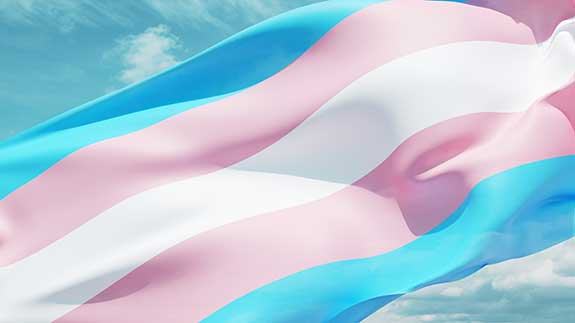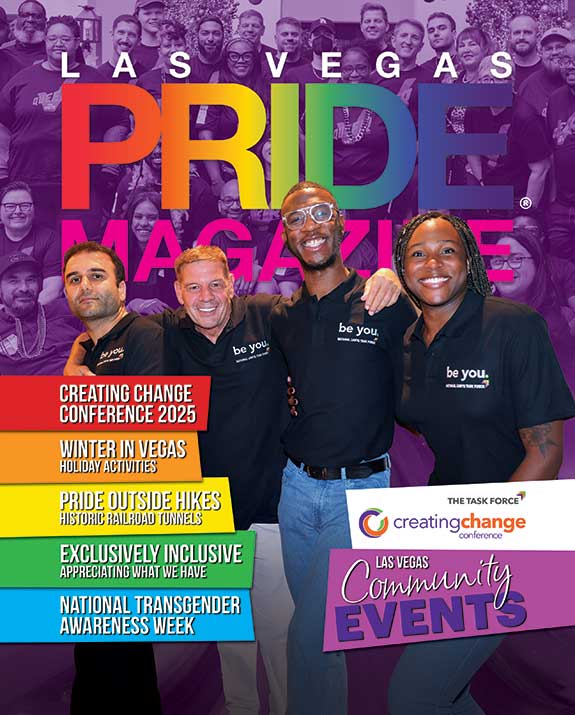National Transgender Awareness Week: Honoring and Empowering Trans Lives
By Las Vegas PRIDE Magazine Staff
National Transgender Awareness Week, held each November, is a vital period of reflection, support, and advocacy. It leads up to the Transgender Day of Remembrance (TDOR) on November 20, a day set aside to memorialize those lost to violence stemming from transphobia. This week is an essential time for learning, community building, and taking action toward the rights and dignity of transgender individuals. It not only raises awareness about the challenges faced by transgender people but also celebrates their resilience and contributions to society.

The History of Transgender Awareness Week
The origins of National Transgender Awareness Week are rooted in grassroots activism. In the late 1990s, the transgender community and its allies began organizing events to highlight the violence and discrimination faced by transgender individuals. This movement gained significant traction, primarily due to the work of activist Gwendolyn Ann Smith, who founded the Transgender Day of Remembrance (TDOR) in 1999. Smith established TDOR to honor Rita Hester, a transgender woman murdered in Boston in 1998, whose case remains unsolved. The widespread attention Hester’s murder attracted, and the lack of coverage or concern from many mainstream media outlets, galvanized activists to create a platform where the community could mourn, remember, and demand change.
As TDOR gained momentum, so did efforts to bring transgender issues to the forefront of public consciousness. By the early 2000s, organizations such as the Gay and Lesbian Alliance Against Defamation (GLAAD) and the Human Rights Campaign (HRC) began promoting the idea of a week-long awareness period leading up to TDOR. Their aim was not only to address violence but to foster broader visibility, encourage dialogue, and spotlight the achievements of the transgender community. National Transgender Awareness Week became formally recognized in the early 2010s, with advocacy groups pushing for national support. The week has since expanded into a global event observed by individuals, organizations, schools, and workplaces worldwide.

Why Transgender Awareness Week Matters
Transgender Awareness Week serves as an opportunity to educate the public on the unique experiences of transgender people. It addresses issues like discrimination in housing, healthcare, and employment, as well as the high rates of violence and harassment that disproportionately affect transgender individuals, particularly transgender people of color. According to data from the National Center for Transgender Equality, nearly half of transgender people report having experienced harassment at work, and transgender youth face alarming rates of bullying, often leading to depression, anxiety, and suicidal ideation.
The week also provides a platform to discuss and dismantle stereotypes about gender identity and expression. It offers an opportunity for allies to deepen their understanding, to practice active support, and to affirm transgender people’s rights to safety, dignity, and equality. These conversations are necessary to protect lives and help society understand that gender diversity has been part of human culture for centuries.

How People Observe and Honor Transgender Awareness Week
Observing Transgender Awareness Week involves a range of activities that promote visibility, honor the lives lost, and provide resources to support the transgender community. Here are some of the most meaningful ways that people, organizations, and communities participate in this important week:
1. Hosting Educational Workshops and Panels
Many advocacy organizations, universities, and workplaces host educational events that provide information on transgender issues. These events may cover topics such as trans history, the legal rights of transgender people, and the importance of gender-affirming healthcare. Workshops often invite transgender speakers to share their personal stories, which can be incredibly impactful for audiences unfamiliar with these experiences.
These educational panels also explore ways in which allies can support transgender rights. From practicing inclusive language to understanding pronouns and advocating for non-discriminatory policies, these workshops empower attendees with actionable steps they can take to support the trans community.
2. Social Media Campaigns and Awareness Drives
Social media is a powerful tool for raising awareness about transgender issues. During Transgender Awareness Week, individuals and organizations often share resources, infographics, and personal stories on platforms like Twitter, Instagram, and Facebook. Campaigns such as #TransAwarenessWeek, #TransRightsAreHumanRights, and #TransJoy are used to amplify trans voices and challenge stereotypes and misconceptions.
Nonprofits and advocacy groups may also release data and reports during this time to highlight the ongoing issues facing transgender people. For example, statistics about employment discrimination or healthcare disparities serve to educate a broader audience about systemic issues affecting transgender individuals.
3. Creating Art and Media That Celebrate Trans Lives
Art has long been a medium for advocacy, and Transgender Awareness Week is a time when artists, filmmakers, writers, and musicians create works that reflect the trans experience. Documentaries, films, and short stories focusing on transgender lives help to humanize issues that may seem abstract to some. Many film festivals, libraries, and community centers screen films such as Paris Is Burning, Disclosure, or The Death and Life of Marsha P. Johnson, which explore trans lives through different lenses.
Photography exhibitions, poetry readings, and art installations often feature works by transgender creators, allowing trans people to express their identities and experiences in their own voices. These works are powerful for their ability to connect audiences emotionally to the realities of transgender individuals.
4. Supporting Trans-Led Organizations
Many people observe Transgender Awareness Week by donating to trans-led organizations that work tirelessly to support and advocate for transgender rights. These organizations provide essential services, such as legal aid, healthcare, mental health support, and housing assistance. By donating to or volunteering with groups like the Sylvia Rivera Law Project, the Transgender Law Center, or the Trevor Project, allies can contribute to a tangible impact on the lives of transgender individuals.
Companies and organizations can also take this opportunity to assess and improve their policies around inclusivity and diversity. Many implement practices to create safer, more affirming environments for transgender employees, like revising their anti-discrimination policies or providing gender-affirming healthcare options.
5. Attending or Organizing Vigils for the Transgender Day of Remembrance
The week culminates in the Transgender Day of Remembrance, a solemn event to honor those who lost their lives due to anti-transgender violence. Communities worldwide hold candlelight vigils, memorial services, and other gatherings to read the names of transgender individuals who were murdered in the previous year. This event serves as a reminder of the dangers that trans people face simply for being who they are.
TDOR also galvanizes the community and its allies, often inspiring renewed efforts to address the root causes of violence against transgender people. Many advocates and community leaders use this occasion to speak out against transphobia, to call for legal reform, and to demand better protections for trans individuals.

How to Be an Ally Beyond Transgender Awareness Week
While Transgender Awareness Week is a dedicated time to learn and take action, allyship is a year-round commitment. Supporting transgender people requires ongoing engagement and self-education. Here are a few meaningful ways to show up as an ally:
- Educate Yourself: Read books, watch documentaries, and follow trans advocates and educators. Understanding the history and struggles of the transgender community is essential for meaningful support.
- Use Inclusive Language: Simple actions, like asking for and respecting pronouns, can make a big difference. Avoid assuming someone’s gender based on appearance and use inclusive language in all interactions.
- Advocate for Policy Changes: Advocate for policies that protect transgender people in workplaces, schools, and public spaces. This includes supporting anti-discrimination legislation, advocating for healthcare access, and challenging policies that harm transgender individuals.
- Stand Up Against Transphobia: Speaking out against transphobic comments, jokes, or policies, even in everyday situations, is crucial. Transphobia often goes unchallenged, and allies play a critical role in creating an environment where harmful behavior is not tolerated.
- Support Trans Entrepreneurs and Artists: One impactful way to show solidarity is to support trans-owned businesses, buy art and media created by transgender individuals, and promote their work within your networks.
Moving Forward
National Transgender Awareness Week is a reminder of both the beauty and the struggles within the trans community. As society continues to evolve, there is hope that greater awareness will lead to substantive changes in policy and culture. However, the fight for equality is far from over. Many transgender individuals, particularly trans women of color, continue to face disproportionate levels of violence, discrimination, and economic hardship.
By participating in Transgender Awareness Week and supporting trans rights year-round, we contribute to a society where every individual can live authentically and without fear. This week serves as both a call to action and a celebration of the diversity and resilience of the transgender community. As allies and advocates, we can play a role in dismantling stigma, promoting acceptance, and advocating for a future where transgender individuals are celebrated for who they are.
This article was originally published in the 2024 Winter Issue of Las Vegas PRIDE Magazine, and can be read in its original format here.


